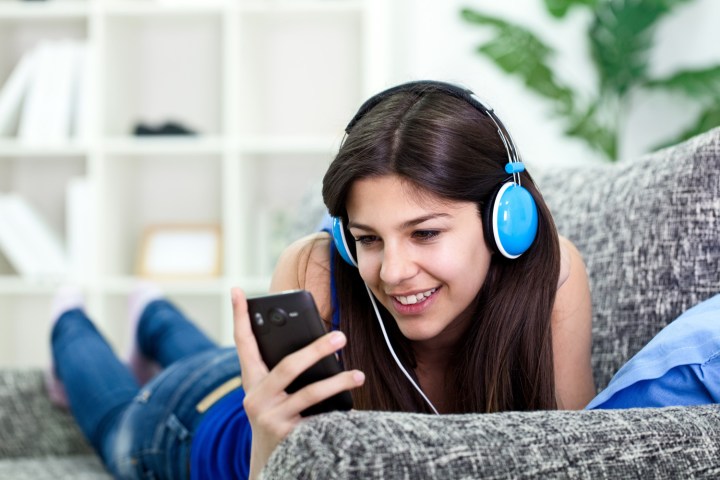
Throughout the two-hour presentation, Huggers referred to the reboot as “chapter two,” this being the first update since Vevo’s founding. While not mentioning former CEO Rio Caraeff, who left the company in 2014, Huggers maintained that Vevo’s multitude of original content, features, and graphics previously “didn’t feel like a family” and “didn’t feel that the sum of the parts made up a bigger story.”
With the reboot, Huggers and Vevo are steamrolling over Vevo’s past ambitions to produce a more streamlined experience that centers on what Vevo’s senior vice president of creative content & programming Tom Conaughton calls “the most popular form of content for the millennial audience,” namely, music videos.
One of the biggest changes Vevo has made is a more concerted effort to provide a truly personalized experience for users. Vevo profiles now get a video feed customized to their activity on Vevo, as well as favorite artists and genres they selected when they signed up. Instead of scrolling through thumbnails, every music video in the feed will have a looped 15-second preview you can scroll through. Vevo has bolstered its recommendation engine by implementing machine learning for the first time, after working with the software for seven months. Now recommendations are powered by Vevo’s artist graph, a dynamic analysis of millions of music video playlists. The profiles will be private by default, but users can opt-in to make their profile public.
According to Vevo, 60 percent of its traffic comes from mobile, so it should be no surprise that the most exciting update is mobile-centric. Referred to as the “portrait player” by Vevo execs at the launch event, the new mobile video player will allow videos to be viewed full screen in portrait mode instead of shrinking them to fit the frame.
You can then drag your finger upwards on the screen to shrink the video into a horizontal view, or swipe down and search for more videos from your feed. Interestingly enough, when you swipe down to search through your feed while a music video is playing, there is no minimized version of the video in the corner to view while you search, as with YouTube, it simply turns into a toolbar at the bottom of your screen, still playing the video.
Huggers also noted that Vevo’s mobile updates happened every six to nine months in the past. From today on, Huggers claims the Vevo app will update every two weeks with new features.
Vevo also wants to expand its use from simply a hub for on-demand music videos to an environment of constant music discovery. One way it is hoping to gain that role is through a distribution partnership with music publication The Fader, which will see its artist video series Everything You Need To Know and The Slang Show featured on Vevo’s platform. Vevo will also collaborate with The Fader on short films and artist documentaries, with a doc on emerging hip hop artist Lil Yachty being the first to be released later this year.
Vevo is not just relying on a good algorithm to help users find what they want to watch in a sea of videos. Like services such as Apple Music and Tidal, Vevo will launch Vevo Curators, a new feature allowing users to follow the Vevo activity and custom playlists of a collection a music industry professionals such as DJs, radio and podcast hosts, and taste makers.
Music experts from BBC Radio, i-D Magazine, and Stereogum will be among a litany of other curators. Vevo also introduced its first ever hosts who will be featured in video content with artists, curate playlists for users to search through, and advise Vevo on its multiple artist programs such as dscvr and Lift. The three new hosts are former HOT 97 radio jock and DJ Drewski, Neon Gold record label founder Lizzy Plapinger, and Snapchat celebrity YesJulz.
While Vevo is progressing to a new stage, it is leaving some of its most ambitious projects on pause. Huggers made sure to point out the 8.8 million views accumulated by Rihanna’s Work music video in the 18-34 year old demographic in its first week — enough to make it the second-most viewed television program behind the Oscar’s and ahead of The Walking Dead, if it was on TV.
Though Huggers was visibly ecstatic to reveal this intriguing piece of information, there was no mention of the 24/7 music video channel Vevo TV, which the company launched in 2013, a year after its last investment in long-form narration with six original programs Vevo no longer promotes.
One of the last projects former CEO Caraeff promoted before he left the company was virtual reality, claiming Vevo would shoot music videos and concerts in virtual reality for the Samsung Gear VR. Nearly two years and little to no VR presence later, Vevo’s new CEO believes “going headfirst into the VR game would be interesting, but distracting.”
Back in February at Re/code’s Code/Media conference, due to Vevo’s business being “all about ad-supported,” Huggers said he was interested in a subscription service. Today at the relaunch, Huggers said Vevo hopes to have the service ready in the near future, but will only “ship the subscription service when we’re ready.” However, he did explain how today’s relaunch is building a new ecosystem for Vevo’s subscription service of tomorrow.
“So what you see here today for our reboot is us laying the foundation for that subscription product. Having those basic building blocks in place.”
The Vevo app is available on Android and iOS and all the web updates are live on the Vevo website.
Download for iOS Download for Android


